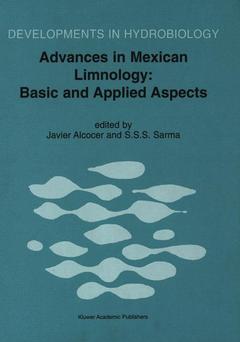Description
Advances in Mexican Limnology: Basic and Applied Aspects, Softcover reprint of the original 1st ed. 2002
Developments in Hydrobiology Series, Vol. 163
Coordinators: Alcocer Javier, Sarma S.S.S
Language: English
Subject for Advances in Mexican Limnology: Basic and Applied Aspects:
Publication date: 10-2012
228 p. · 19.5x26 cm · Paperback
Publication date: 06-2002
240 p. · 23.4x15.6 cm · Paperback
Description
/li>Contents
/li>
The present volume comprises aspects of both basic and applied limnology. They include works on physical, chemical, and biological limnology, as well as experimental approaches in selected areas.
Contributions from investigators regarding aquatic conservation and biodiversity were specifically not available and therefore, these aspects are considered in various included works. Most manuscripts deal with lentic aquatic resources. This is not surprising since Mexican limnology followed the general study trend of that from temperate limnology. Despite this, we must emphasize that lotic resources in Mexico are quite important both locally and regionally. This does not mean that rivers are not under limnological research in Mexico, just that their study has only recently begun.
It is the intention of the volume to stimulate a larger section of limnologists to further research in this field. It is to be hoped that policy-framing governmental authorities in Mexico will benefit from it, and consider some of the aspects described so that further damage to the epicontinental waterbodies can be halted, and remedial measures can be considered in the future.




